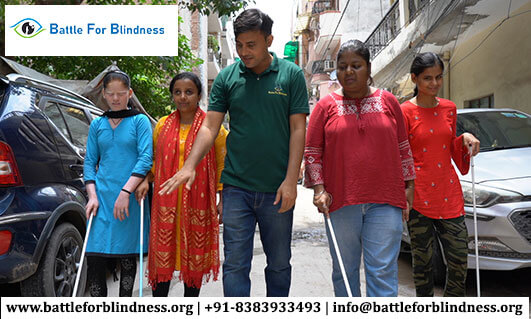
In today’s rapidly advancing digital age, inclusivity and accessibility are more important than ever. Among the many challenges faced by individuals with disabilities, those who are both deaf and blind face unique hurdles in education, communication, and daily life. However, innovative technologies and tactile learning methods are opening up new possibilities for enhancing the learning experience for the deaf-blind community. In this blog, we will explore the most recent breakthroughs and approaches in the field, from advanced assistive devices to cutting-edge touch-based systems.
Understanding the Deaf-Blind Experience
Deaf-blindness, a condition that combines both vision and hearing loss, requires personalized and adaptive learning techniques. The impact of these dual sensory impairments can make it difficult for individuals to communicate, access information, and interact with their environment. However, thanks to ongoing research and technological innovation, solutions are emerging that empower individuals who are deaf-blind to engage with the world in meaningful ways.
Innovative Technology Solutions for Deaf-Blind Learners
Braille Technology Advancements
Traditional methods of learning for the deaf-blind community, such as the use of Braille, have been significantly enhanced with the integration of modern technology. Devices like Braille e-readers and Braille displays allow students to access a wide range of digital content, from textbooks to online learning materials. These devices are now more portable, customizable, and efficient than ever, providing a seamless learning experience.
Trending Keywords: Braille technology, Braille e-readers, Braille displays, accessible learning devices
Tactile Graphics and Touch-Based Learning Tools
For learners who are both deaf and blind, tactile graphics and touch-based tools provide a multi-sensory approach to learning. Tactile maps, 3D models, and touch-sensitive screens allow students to feel shapes, letters, and objects, helping them better understand complex concepts. These tools are especially useful in STEM (Science, Technology, Engineering, and Mathematics) education, where visual diagrams and models are essential for understanding.
Trending Keywords: tactile learning, touch-based learning, tactile graphics, 3D models for learning
Assistive Technology Devices for Communication
Communication is one of the biggest challenges for the deaf-blind community. However, a wide range of assistive devices is helping bridge this gap. Devices such as the BrailleNote, which provides real-time speech-to-text conversion, and innovative communication boards allow individuals to interact with others more easily. Touch-based systems like the Tactile Tablet are also making strides, offering a platform where deaf-blind individuals can type, communicate, and even interact with online platforms.
Trending Keywords: assistive communication devices, speech-to-text for deaf-blind, Tactile Tablet, real-time communication aids
Smartphone Apps for Deaf-Blind Education
Many smartphone apps are designed with accessibility in mind. These apps, when used alongside specialized assistive devices, enable deaf-blind individuals to access educational content, engage with their peers, and interact with the digital world. Apps that provide haptic feedback, text-to-speech features, or even real-time sign language interpretation are becoming indispensable tools for both students and educators.
The Role of Touch in Deaf-Blind Education
Touch is a fundamental sense for individuals who are deaf-blind, as it is often the only reliable way to communicate and interact with the world around them. Touch-based education not only helps learners understand their surroundings but also provides an effective means of communication. Tactile sign language, for example, allows deaf-blind individuals to receive sign language through touch, enabling direct interaction with others.
Collaborative Learning with Technology
Technology is not only transforming individual learning but also enabling more collaborative educational experiences. Digital platforms allow deaf-blind learners to connect with peers and educators from around the world. This collaboration fosters a sense of community and support, helping students feel more engaged and included in the educational process. Virtual reality (VR) and augmented reality (AR) technologies are emerging as powerful tools in providing immersive learning experiences for deaf-blind students, offering multi-sensory input that aids in cognitive and social development.
The Future of Deaf-Blind Education: A Tech-Driven Path
The future of education for the deaf-blind community is bright, thanks to continuous advancements in assistive technology and tactile-based systems. The integration of artificial intelligence (AI), machine learning, and IoT (Internet of Things) is likely to open up even more personalized learning opportunities. As these technologies evolve, we can expect greater autonomy for deaf-blind individuals in both their learning and daily activities.
Conclusion
The key to enhancing education for deaf-blind learners lies in embracing innovation, particularly through technology and touch-based solutions. By continuously developing accessible devices and systems, we can create a more inclusive world where every individual, regardless of their sensory impairments, has the opportunity to succeed. It is clear that the future holds immense potential for transforming the learning experiences of the deaf-blind community, thanks to the power of technology and the sense of touch.





